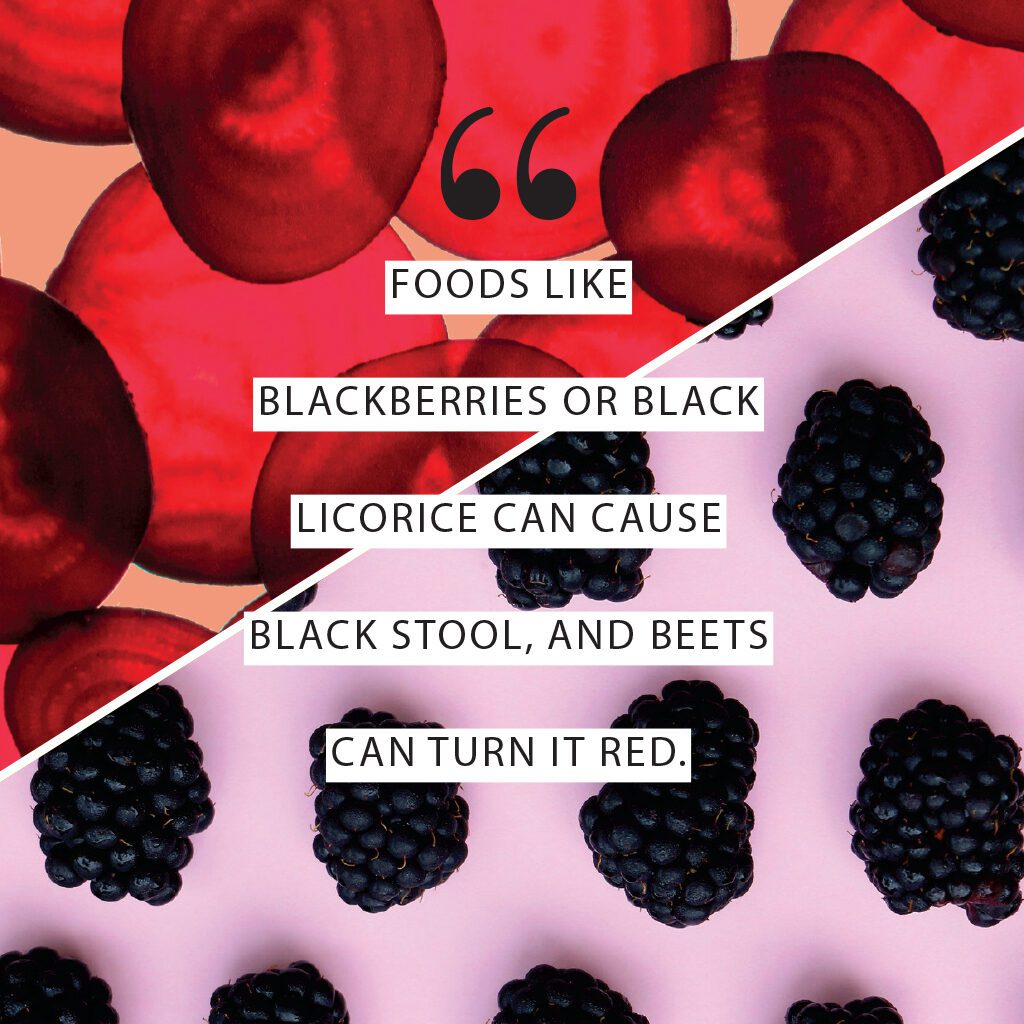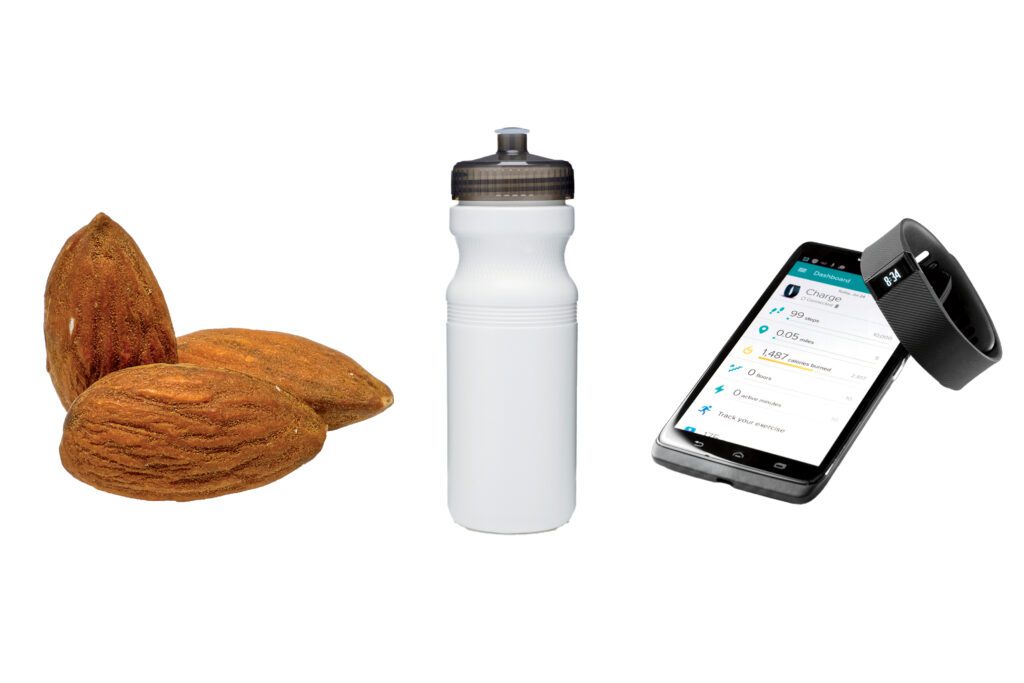Admittedly, the following information should not be used as dinner table conversation or icebreaker material, but, as the saying goes, “everyone poops.” Learning to interpret variances in your stool can provide valuable insights into your health and wellness. If your gastrointestinal tract isn’t functioning properly, it could suggest the need for diet changes or even signal a serious issue or disease.
Admittedly, the following information should not be used as dinner table conversation or icebreaker material, but, as the saying goes, “everyone poops.” Learning to interpret variances in your stool can provide valuable insights into your health and wellness. If your gastrointestinal tract isn’t functioning properly, it could suggest the need for diet changes or even signal a serious issue or disease.
Dr. Guru Medam, a physician with CHI Memorial Internal Medicine Associates, explains, “Stool is made up of water, bacteria, insoluble fiber, end products and byproducts of digested food, cellulose, intestinal secretions, salts, and dead cells from exfoliated lining of the GI tract.”

To understand the signals of your stool, there are four S’s to take note of: shape, shade, smell, and schedule.
Shape
In 1997, our friends across the pond at the University of Bristol and the Bristol Royal Infirmary created the Bristol Stool Chart – a tool that makes it easier to talk to your doctor and classify your stool without having to provide a sample.
According to the chart, Type 1 (hard lumps that are difficult to pass) and Type 2 (sausage-shaped but lumpy) are considered constipated, Type 3 (sausage-shaped with cracks on the surface), Type 4 (smooth sausage-shaped), and Type 5 (soft blobs) are considered normal (type 4 is ideal), while Type 6 (mushy) or Type 7 (watery) means you’ve got diarrhea.
“Constipation can be caused by certain medications, a low fiber diet, dehydration, a sedentary lifestyle, or dysfunction between the muscles of the anus and rectum,” Dr. Medam states. Chronic cases could suggest diabetes, hypothyroidism, or other issues like inflammatory bowel disease.
Conversely, Dr. Medam notes, “Diarrhea is often caused by infections from viruses or bacteria, side effects from medications, or digestion problems like lactose intolerance or gluten sensitivity.” In more serious cases, diarrhea could signal a chronic disease like Crohn’s disease, irritable bowel syndrome, or ulcerative colitis.
Overly soft stool that sticks to the side of the toilet bowl and is difficult to flush (called steatorrhea) suggests too much oil. This may mean you need to lighten up on the oil in your diet, or it could suggest your body isn’t absorbing fats. The latter can indicate certain diseases like chronic pancreatitis.
Bottom line: The occasional misshapen stool doesn’t necessarily signify an issue, but persistent bowel movements outside the normal range could be symptomatic of a problem.
Smell
While an unpleasant smell is normal, especially foul odors or major changes are not.
The routine smelliness of your bowel movement is caused by bacteria and parasites leaving the body. Abnormal, malodorous excrement can be caused if you have a malabsorption issue. This means your body has a hard time absorbing the right amount of nutrients from your diet.
Other common issues that can affect the smell of your bowel movements include certain medications and supplements, food stuck in your colon too long, or an infection.
Bottom line: Odor is normal, but excessively malodorous stool can indicate a more serious issue. Your doctor will be able to help determine the underlying cause, but a change in diet may be the key.
Shade


We all know various shades of brown are normal and seeing green isn’t out of the question. Dr. Camille Sommer, a gastroenterologist with the Gastroenterology Associates of Chattanooga on the Parkridge Medical Center campus explains, “Most of the time, minor changes in the color of your stool are due to diet. After all, what we eat usually changes on a daily basis.” However, the presence of certain colors might indicate a serious problem.
If you turn to flush and you see black or red, take a quick inventory of what you’ve consumed lately. Medicines containing bismuth, such as Pepto Bismol, and foods like blackberries or black licorice can cause black stool, and beets can turn it red. But, if you haven’t recently digested anything to cause discoloration, it could mean you’ve got a bleed somewhere along your GI tract and you need to see a physician.
Yellow stool could mean too much fat in your diet, a gallbladder issue, or giardia. Giardia is a parasite found in freshwater, aka: your outdoor summer swimming hole.
Gray, white, or pale stool is also cause for concern. “The brown color in stool is due to bile, which is made by the liver to digest fat,” says Dr. Sommer. If your stool color is off, and not due to something you ate or your medication, it might indicate a bile duct blockage which can cause problems. It could be as benign as a self-resolving cyst, or a bit more serious like gallstones, or it could even indicate cancer.
Bottom line: Keep track of what you eat and the expected side effects of any medications you take, as some are expected to cause colorful stool. If you repeatedly see discolored stool with no known cause, schedule an appointment with your doctor.
Schedule
Everyone’s body, digestive system, and diet is different, so there is no magic number or ideal frequency for bowel movements. “Anywhere between three bowel movements per day to three per week is considered within the normal range,” says Dr. Sommer.
“More important than the actual frequency of stooling is the ease with which you’re able to have a bowel movement,” she continues. You shouldn’t have to strain and it shouldn’t take a long time. No more toilet time reading material! Research shows long periods sitting on the toilet, keeping your colon relaxed interspersed with short bursts of strain, or intense straining in general, lead to a higher risk of hemorrhoids.
Bottom line: Determine what frequency is normal for you. As a general rule, if you’re comfortable, you’re okay. Feeling like it’s urgent too often or plugged up for too long are when you should be concerned.
How To Normalize Your Stool
If your stool is off, don’t panic. Here are a few simple tips to get back to normal.
Increase your fiber intake
Fiber helps with digestion and is found in fruits, veggies, nuts, beans, and whole grains. Medical professionals recommend 25-40 grams of fiber a day, depending on your gender and size.
Probiotics
Probiotics, microorganisms that promote good bacteria in your intestines, help you digest. They live in fermented foods like kombucha, sauerkraut, kimchi, and cultured dairy products such as yogurt, goat cheese, and cottage cheese.


Drink lots of water
Proper levels of hydration will keep your colon and your stool properly moisturized, which helps with regularity.
Magnesium
Magnesium is a natural stool softener and helps ease constipation. You can take it as a supplement or include a food with high magnesium content, like sunflower seeds, into your diet. Just be careful not to consume more than the recommended dosage.
Exercise
Living an active lifestyle with frequent exercise stimulates your system and keeps your cycle regular.


Dr. Guru Medam
Physician, CHI Memorial Internal Medicine Associates – Chattanooga


Dr. Camille Sommer
Gastroenterologist, Gastroenterology Associates of Chattanooga on the Parkridge Medical Center Campus

